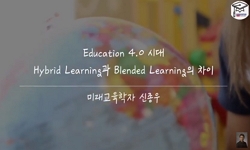Background: Interspecific ginseng hybrid, Panax ginseng ${\times}$ Panax quenquifolius (Pgq) has vigorous growth and produces larger roots than its parents. However, F1 progenies are complete male sterile. Plant tissue culture technology can circumven...
http://chineseinput.net/에서 pinyin(병음)방식으로 중국어를 변환할 수 있습니다.
변환된 중국어를 복사하여 사용하시면 됩니다.
- 中文 을 입력하시려면 zhongwen을 입력하시고 space를누르시면됩니다.
- 北京 을 입력하시려면 beijing을 입력하시고 space를 누르시면 됩니다.



High frequency somatic embryogenesis and plant regeneration of interspecific ginseng hybrid between Panax ginseng and Panax quinquefolius
한글로보기https://www.riss.kr/link?id=A106175519
- 저자
- 발행기관
- 학술지명
- 권호사항
-
발행연도
2019
-
작성언어
English
- 주제어
-
등재정보
SCIE,SCOPUS,KCI등재
-
자료형태
학술저널
- 발행기관 URL
-
수록면
38-48(11쪽)
- 제공처
-
0
상세조회 -
0
다운로드
부가정보
다국어 초록 (Multilingual Abstract)
Background: Interspecific ginseng hybrid, Panax ginseng ${\times}$ Panax quenquifolius (Pgq) has vigorous growth and produces larger roots than its parents. However, F1 progenies are complete male sterile. Plant tissue culture technology can circumvent the issue and propagate the hybrid. Methods: Murashige and Skoog (MS) medium with different concentrations (0, 2, 4, and 6 mg/L) of 2,4-dichlorophenoxyacetic acid (2,4-D) was used for callus induction and somatic embryogenesis (SE). The embryos, after culturing on $GA_3$ supplemented medium, were transferred to hormone free 1/2 Schenk and Hildebrandt (SH) medium. The developed taproots with dormant buds were treated with $GA_3$ to break the bud dormancy, and transferred to soil. Hybrid Pgq plants were verified by random amplified polymorphic DNA (RAPD) and inter simple sequence repeat (ISSR) analyses and by LC-IT-TOF-MS. Results: We conducted a comparative study of somatic embryogenesis (SE) in Pgq and its parents, and attempted to establish the soil transfer of in vitro propagated Pgq tap roots. The Pgq explants showed higher rate of embryogenesis (~56% at 2 mg/L 2,4-D concentration) as well as higher number of embryos per explants (~7 at the same 2,4-D concentration) compared to its either parents. The germinated embryos, after culturing on $GA_3$ supplemented medium, were transferred to hormone free 1/2 SH medium to support the continued growth and kept until nutrient depletion induced senescence (NuDIS) of leaf defoliation occurred (4 months). By that time, thickened tap roots with well-developed lateral roots and dormant buds were obtained. All Pgq tap roots pretreated with 20 mg/L $GA_3$ for at least a week produced new shoots after soil transfer. We selected the discriminatory RAPD and ISSR markers to find the interspecific ginseng hybrid among its parents. The $F_1$ hybrid (Pgq) contained species specific 2 ginsenosides (ginsenoside Rf in P. ginseng and pseudoginsenosides $F_{11}$ in P. quinquefolius), and higher amount of other ginsenosides than its parents. Conclusion: Micropropagation of interspecific hybrid ginseng can give an opportunity for continuous production of plants.
동일학술지(권/호) 다른 논문
-
- 고려인삼학회
- Jun-Nan Hu
- 2019
- SCIE,SCOPUS,KCI등재
-
- 고려인삼학회
- Jieun Jung
- 2019
- SCIE,SCOPUS,KCI등재
-
- 고려인삼학회
- Lei Tian
- 2019
- SCIE,SCOPUS,KCI등재
-
- 고려인삼학회
- Jong Youn Kim
- 2019
- SCIE,SCOPUS,KCI등재





 ScienceON
ScienceON






